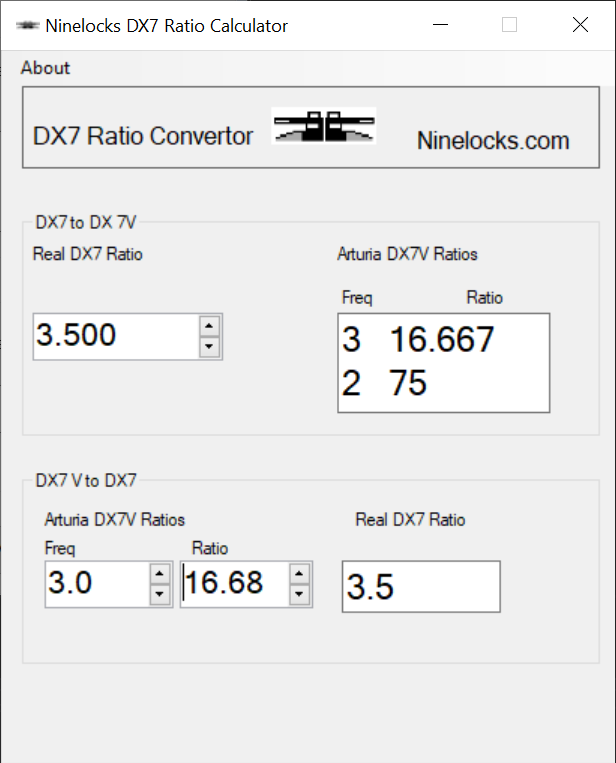An small problem highlighted on youtube and on the Arturia forums is the differnance in how modulation is expressed for the operators is done differently.
Taking as an example the factory program of TUB_BEL
| DX7 | DX7 V(Arturia) |
| 3.5 | 2.75 |
| 3.01 | 3.1 |
| DX7 | DX7 V Arturia |
| 3.5 | 3.166 |
The method of converting from to the other is explained in this post on the Arturia forums here.
But why the difference.
On Arturia DX7 V the number of the ratio is expressed as a percentage of the number on the left.
Whereas on the DX7 the number is expressed as the percentage of an octave. (I think!)
This has a slightly confusing side effect in that an ratio on the DX7 can be represented in more than one set of numbers on the arturia.
Generally I want to go from real DX7 to Arturia hence wrote an simple (and ugy application to do the conversion)

How to go from Arturia DX7 V to Real DX7
Example 1
2 .75
Take the left number (freq) = 2
multiply it by the ratio part (so 2 * .75)
Then add it to the left number (the 2)
3 .5 = 2 * .75 +2 is the DX 7 Equivalent.
Arghhhhh you say (I know I did) how can 3.5 on the DX7 be either 2 27 or 3 1 on the Arturia.
OK, so the ratio on the Arturia is expressed as a percentage of the Freq (the number on the left) so lets work that back with the same calculation
Example 2
3 .166 On the Arturia DX7 V
Take the left number (freq) = 3
multiply it by the ratio part (so 3 x 0.166= 0.499 but we’ll round it up to 0.5)
Then add it to the left number (the 3) = 3.5
3.5 = 2 * .75 +2 is the DX 7 Equivalent
At least I think this is how it works, am I wrong?
